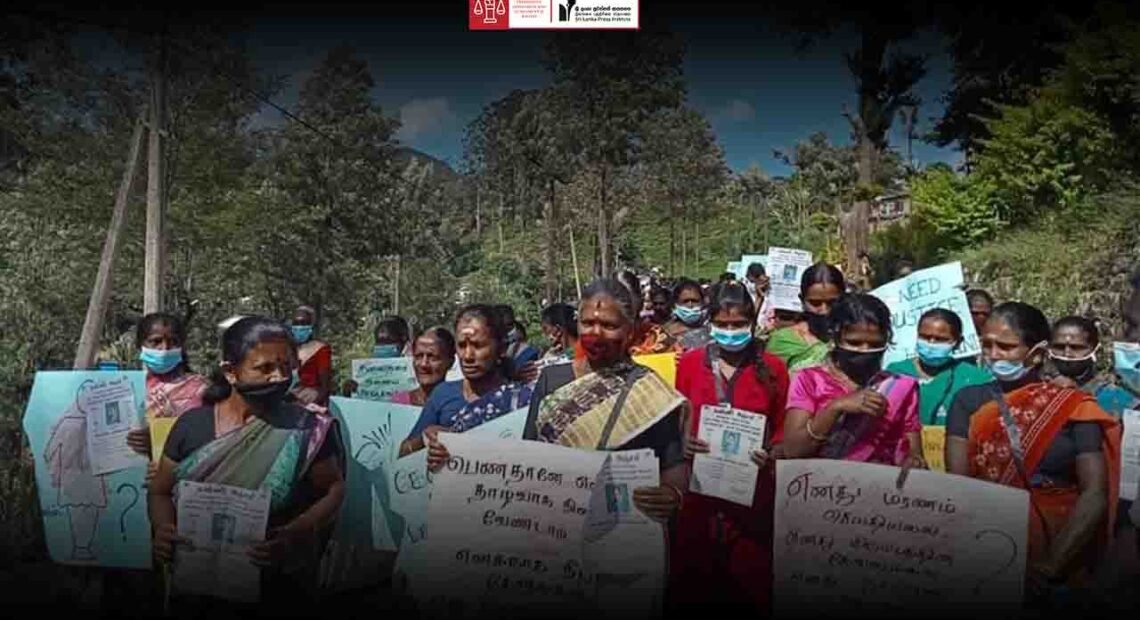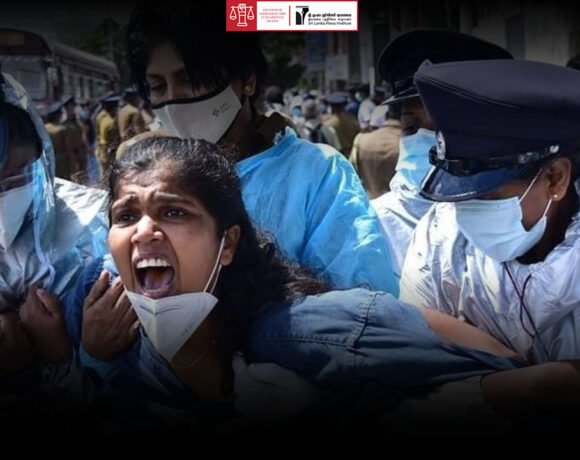
Child Labour: Slavery in the 21st Century
Kamanthi Wickramasinghe
Waking up early in the morning to walk 4-5 KM to school through unpaved, deserted roads and wooded patches in poor lighting – and often without a proper breakfast – is the common plight of a majority of children in Sri Lanka’s estate sector. The descendants of labour brought down from India and settled by the British as workers in tea estates, the Sri Lankan Tamils of Indian Origin – or the Malayaga Tamilar –share a long history of discrimination and suppression within the country. With a gamut of economic hardships, the estate community continues their struggle for basic rights, mostly at the expense of their children.
In Sri Lanka, child labour and the trafficking of persons share a close relationship. Even though the country has ratified several international conventions including the International Labour Organisation Conventions on Minimum Age, Worst Forms of Child Labour, United Nations Convention on the Rights of the Child (UNCRC), UNCRC Optional Protocol on Armed Conflict, UNCRC Optional Protocol on the Sale of Children, Child Prostitution and Child Pornography and the Palermo Protocol on Trafficking in Persons, incidents related to child labour continue unabated. The latest Child Activity Survey done in 2016 doesn’t include information on children between ages 5-11 years who work less than 15 hours a week or on children between ages 12-14 years who work less than 25 hours a week in agriculture sectors. A report on Findings of the Worst Forms of Labour in Sri Lanka by the US Department of Labour suggests that children living near coastal, agricultural, mining and firewood-producing areas are more likely to be used as child labour. However, at the onset of recent incidents, the Department of Labour has increased the list of hazardous occupations to 76 and has included domestic labour as one of them. But this needs to be gazetted if it is to be accepted as law.
Children in the estate sector have been living in unsafe conditions for many generations. In a male-dominated world, living in cramped spaces in line rooms make children – especially girls – vulnerable to abuse. A study on underlying causes of child and maternal malnutrition in the estate sector reveals that nearly 10% of adolescent girls had already begun childbearing. Girls often suffer sexual abuse at the hands of a family member. This crisis is further encouraged by poor living conditions, alcoholism, and illiteracy. A recent survey among 400 estate workers between ages 18-24 years in the Kotagala-Thalawakele Health Division concluded that a comprehensive sexual health service is needed for youth and adolescents in the estate sector. In support of this recommendation, gender and child rights activists have on numerous occasions drawn attention to domestic violence, harassment and abuse as being widespread in these communities. Estate sector women are not given an opportunity to lead trade unions or other societies. Even if they were elected as leaders they rarely – if at all – enjoyed powers to spearhead decisions or lead the communities. Therefore women voices in the community remain marginalized while rampant illiteracy among women inadvertently supported the view that the education of children was a waste of time.
Poverty acts as one of the main causative factors that promote child labour. A study in this area focused on parents who were compelled to employ their children at a young age in estates, shops, boutiques or construction sites to raise funds for debt repayment. Obtained by the poor as an instrument of improving their living conditions, these loans are issued by commercial banks and informal actors such as moneylenders, pawnbrokers etc. Unregulated interest rates soon victimize the borrower who ends up entangled in a debt trap. The above study revealed that a majority of girls end up picking tea leaves in estates while boys engage in collecting oil palm (katupol). A common notion among the sample obtained from Hulandawa Estate in Matara was that school education was invaluable and that a successful life was attributed to money.
The increasing number of child abuse cases reported to the National Child Protection Authority, the apex body established to protect children, has raised scepticism among child rights activists who have begun questioning the government’s definition of national security. “Child protection is a national crisis in our paradise island,” opined Dr. Tushara Wickramanayake, the chairperson of Stop Child Cruelty Trust. “Sri Lanka, officially and currently a country in peace has set a new world record where five children were physically and sexually abused to death in the past 365 days. In the absence of armed conflict, this is an unprecedented humanitarian disaster.” Wickramanayake emphasized the need to identify the issue of abuse in its severest form: “Black is black; there is no light black or dark black.
[Similarly] abuse is abuse; let’s not downplay it with wordplay”, she added. The betterment of the country’s children in mind, Wickramanayake further argued that the definition of employment must essentially provide economic strength, skills development, and opportunities for career advancement: a scope that was not guaranteed in domestic labour work. “Employing a child, irrespective of legally-defined age in domestic labour is not employment,” she concluded: “It is modern-day slavery”. Wickramanayake endorsed that domestic employment be effectively banned in Sri Lanka for those below 18 years of age.








